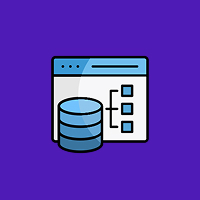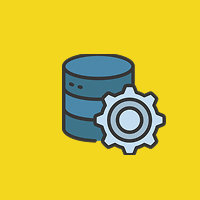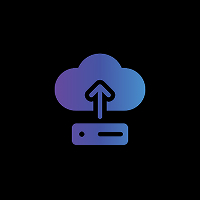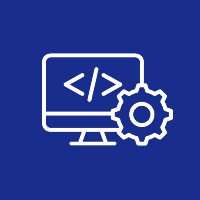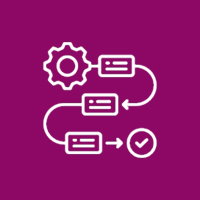Performance is the most significant aspect of user retention and app success in the competitive mobile application landscape. A quick, responsive, and optimized iOS application keeps users engaged and satisfied, therefore leading to improved app reviews and higher retention. Nevertheless, optimization of app performance is a nuanced problem, especially while trying to support a range of devices from the new iPhone to an older one. Either you are creating a new app or updating an existing one, your iOS app has to be performance-optimized. In this tutorial, we will delve deep into the best practices of optimizing app speed, reducing memory usage, optimizing battery life, and improving responsiveness on devices.
1. Minimize Memory Usage
One of the most critical aspects of iOS app optimization is memory management. Inefficient use of memory can slow down the app, causing crashes and a poor user experience. Memory leaks, excessive memory allocation, and improper use of resources can especially damage performance on older devices with lower RAM. To optimize memory usage:
- Reduce the number of objects in memory at any given time.
- Process huge amounts of data in an optimized way by breaking them into little sets and loading them as and when needed.
- Release unused resources by deallocating objects when no longer needed.
Tip: Use Instruments in Xcode to monitor memory usage and identify memory leaks. The Leaks instrument will allow you to identify and address issues that might slow down the app.
2. Optimize Your Code
Clean code is the foundation of a high-performance app. Redundant tiny code and optimized algorithms will reduce execution time, which will make the performance smooth and faster. To make your code optimal:
- Don’t block the main thread with heavy calculations or lengthy tasks. This could lead to UI freezing or even making it unresponsive.
- Use Grand Central Dispatch (GCD) or OperationQueues for offloading costly operations onto background threads.
- Profile your code periodically to make sure there are no bottlenecks or redundant operations.
Tip: Utilize Xcode’s Time Profiler to identify slow code and identify areas of optimization.
3. Take advantage of Lazy Loading and Caching
Lazy loading and caching are very good ways to improve performance- really ideal for applications with lots of images or data. Loading only those resources when really needed avoids load times and simultaneously ensures reduced memory usage. Similarly, similar to the logic behind lazy loading, caching avoids redundant network calls and thus ensures accelerating data pulling.
- Lazy loading guarantees that loads are ensured when content really is needed, thus accelerating startup time.
- In-memory caching can accelerate access to frequently retrieved data without duplication of data on network requests or costly computation.
Tip: Make use of NSCache to store frequently accessed data and images in memory so that your application runs smooth without filling up a device’s memory.
4. Improve Network Requests
Network requests are among the top offenders when it comes to making your mobile apps slower, particularly if your app makes repetitive calls or retrieves enormous datasets. For improved network calls:
- Minimize network requests using batch requests or through optimized protocols such as HTTP/2.
- Compress network data to conserve bandwidth and transfer time.
- Execute long-lived data-fetching operations in the background so that it will not be blocking the UI.
Tip: Use URLSession with background configuration to execute network requests asynchronously so that your app will be responsive even when there is heavy data transfer.
5. Minimize UI Overhead
User interface is a very important component of app performance. Slow or overly complex UIs can drastically slow down an app. To optimize your app’s UI:
- Use light-weight UI controls and reduce view layers.
- Reduce view hierarchies by using simple layouts and avoiding unnecessary nesting of views.
- Use efficient table views and collection views that load only visible cells into memory (cell reuse).
Tip: Use UITableView or UICollectionView with cell reuse to efficiently manage large lists or grids. In this manner, only the visible elements are loaded into memory, improving responsiveness.
6. Optimize Background Tasks
Optimal background task management is essential in maximizing your app’s overall performance without draining device resources. To execute optimal background task management:
- Use Background Fetch to refresh content in the background.
- Use Background App Refresh to allow the app to fetch new information at intervals without disrupting the user.
- Ensure background work is optimized and prioritized to prevent unnecessary use of resources.
Tip: Utilize WorkManager or URLSession background tasks to run processes like downloading data or syncing with servers in the background without disrupting the app’s function.
7. Improve Battery Life
Excessive battery use can lead to a poor user experience and cause users to uninstall your application. To keep battery use to a minimum:
- Reduce background work and ensure activities are only running when needed.
- Use location services sparingly, and utilize more power-efficient ways of getting location information, like significant location change reporting.
- Turn off sensors and features when not in use, such as Bluetooth or background audio.
Tip: Use the Instruments Energy Log tool in Xcode to determine what aspects of your app are using excessive amounts of power and then take steps to reduce battery consumption.
8. Implement Performance-Critical Code Using Swift
Swift is an optimized language that is well suited to the demands of iOS development. When you’re about to run performance-critical code:
- Use Swift instead of Objective-C for something that needs to be run immediately and where you need low-level memory control.
- Leverage Swift’s latest concurrency features, like async/await and Swift Concurrency, to make asynchronous tasks easier without compromising on performance.
Tip: Implement basic logic and tasking involving maximum performance like animations, heavy computing, and memory allocation in Swift.
9. Test on Multiple Devices
Testing across multiple devices makes sure that your app performs well on various hardware setups. Though the new iPhone models can execute performance-demanding tasks with perfection, the older ones might face difficulties in executing the same processes.
- Test your app on different screen sizes, performance levels, and iOS versions.
- Test using the Xcode Simulator, but also make sure to test on actual devices for more realistic observations of performance.
Tip: Use Instruments in Xcode to profile your app on a number of devices and identify any performance bottlenecks that can be encountered on lower-end devices.
10. Update the App Periodically
It is essential to maintain your app updated with the latest iOS SDKs and tools in order to function appropriately. An update of the iOS comprises some enhancements and enhancements, which are beneficial in simplifying the application.
- Your app should always be updated for availing better performance features supplied by Apple.
- Bring your dependencies up to date to keep your app taking advantage of performance improvements and bug fixes.
Tip: Periodically read Apple’s developer documentation and release notes in order to keep up with performance improvements and latest features of the iOS platform.
Conclusion
Optimizing iOS apps is a continuous task that requires serious attention to detail in every little thing that is done in building an app. From memory management to network request and UI composition, all plays a role toward the fact that your app responds well on an extensive range of devices. Embracing all these optimization strategies, you will be able to provide users with a fast, responsive, and smooth experience and increase overall user satisfaction and involvement. Through continuous testing, performance profiling, and updating, you can maintain an app at its best years down the line, setting it up for long-term success.
Contact Us Today









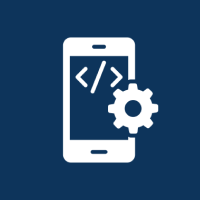



 Database Development
Database Development








